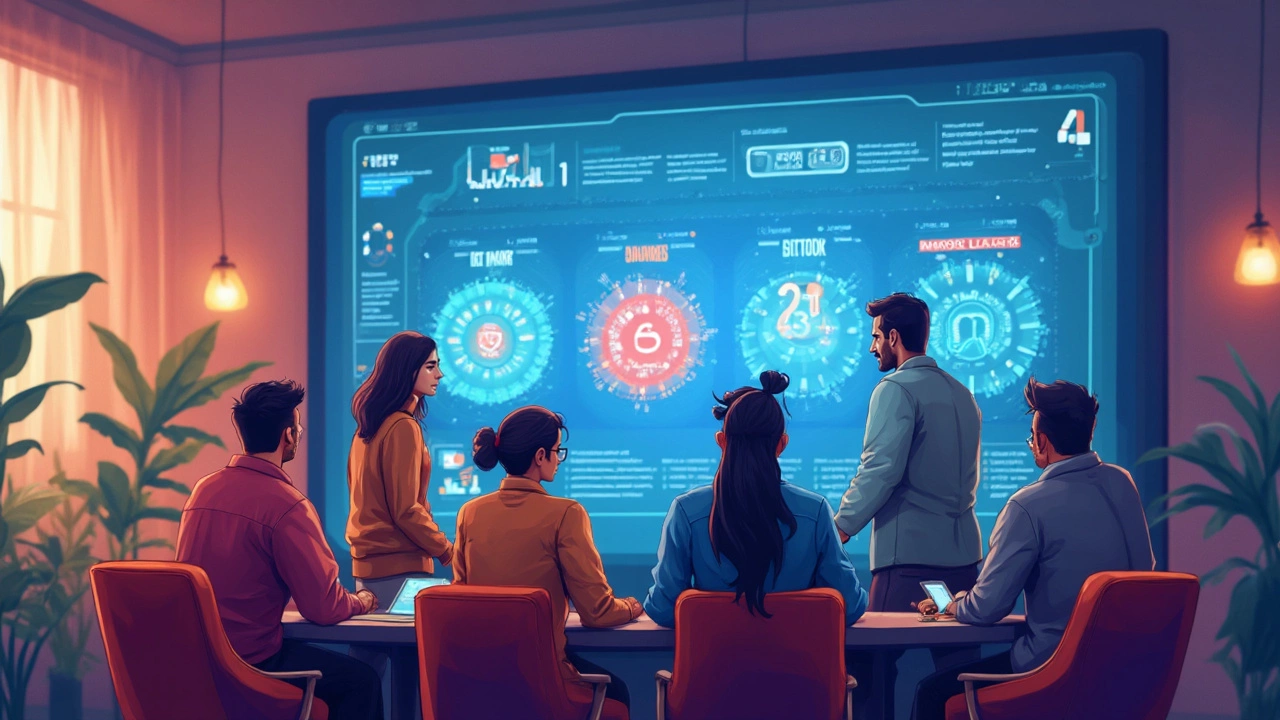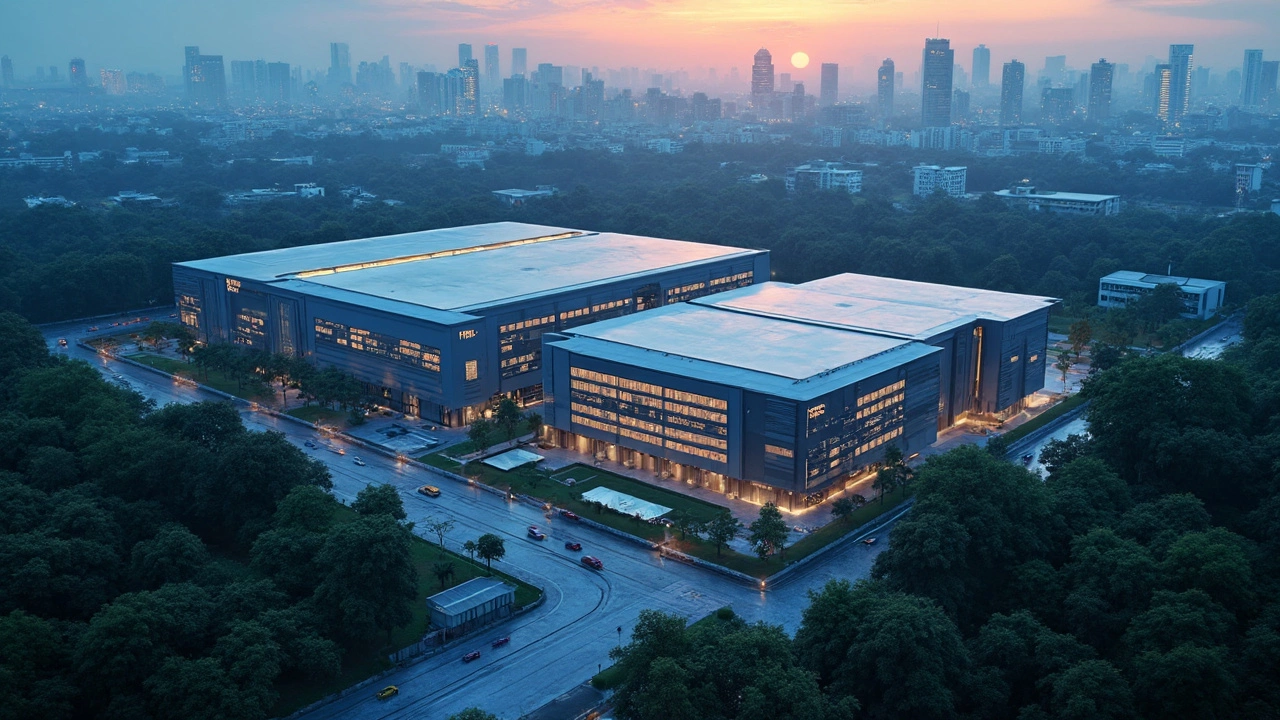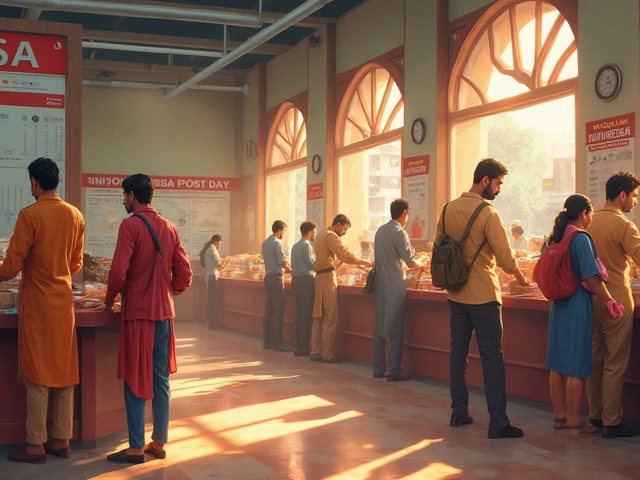Ever found yourself scratching your head over what those data center tiers actually mean? You're not alone. It's like trying to decode a secret language at first glance. But don't worry, this stuff isn't as mysterious as it seems. At the heart of it all, these tiers are just a way to rank data centers based on their reliability and performance levels.
Imagine you're shopping for a car. Do you want a basic model that gets you from A to B, or are you aiming for one with all the bells and whistles, guaranteeing a smooth ride no matter what? Data center tiers work a bit like that. The higher the tier, the more reliability and redundancy you can expect. But with more features comes a higher price tag, so matching the tier to your needs is crucial.
- The Basics of Data Center Tiers
- Diving into Tier 1 and Tier 2
- Exploring Tier 3 Features
- What Makes Tier 4 Stand Out
The Basics of Data Center Tiers
Okay, so data center tiers might sound technical, but they aren’t just for tech gurus. The whole idea is to help folks like you and me understand what kind of service to expect from a data center. Pretty neat, huh? The tiers range from 1 to 4, with Tier 1 being the most basic and Tier 4 offering the highest level of reliability and redundancy.
Think of it as a ladder. You start at Tier 1, which is like your entry-level option. It's got minimal redundancy, meaning if something goes wrong, there might be a little more downtime as things get sorted. Not great if you need stuff running 24/7, but it’s perfect for smaller businesses with tighter budgets.
Tier 2 data centers kick it up a notch with more redundancy. They’re more reliable, sifting through issues faster than Tier 1, but still not the top-tier option if you want ultimate peace of mind. For many mid-sized businesses, it’s a solid choice that balances cost with reliability.
As you climb higher with Tier 3 and Tier 4, you’re getting into high-availability territory. These are your heavy-duty options, designed to stay online no matter what. For big companies that can’t afford downtime (looking at you, Netflix and Amazon), these are the go-to choices.
Here's a quick breakdown of the basics:
- Tier 1: Basic, non-redundant power and cooling, about 28.8 hours of annual downtime.
- Tier 2: Redundant power and cooling, less than 22 hours of annual downtime.
- Tier 3: Concurrently maintainable infrastructure, just 1.6 hours of annual downtime.
- Tier 4: Fault-tolerant setup, promising 99.995% uptime, with only 0.4 hours of annual downtime.
So, when you’re eyeing a data center, the tier tells you a lot about the reliability you’re signing up for. Choose wisely!
Diving into Tier 1 and Tier 2
Alright, let's break down what happens in Tier 1 and Tier 2 data centers. Think of Tier 1 as your entry-level option. It's like having a car with just the basics — it runs, but don't expect it to have features like air conditioning or a sound system. These data centers provide the essentials to keep things running, but they've got just one path for power and cooling, so if that path goes down, so does everything else.
Here’s a cool stat: Tier 1 data centers offer 99.671% uptime. Now, if you're doing the math, that means you might face over 28 hours of downtime per year. For a business that can survive without constant online access or critical systems, this might be okay.
Tier 2 data centers take it up a notch. It's like upgrading your ride to one with air conditioning and a decent stereo. Alongside the basic stuff, these data centers include some redundant coolers and generators. That means there's more than one path for power and cooling. So if one path fails, you’ve got a backup.
Aiming for better uptime? Tier 2 data centers manage to bring it up to around 99.741%. This translates to about 22 hours of potential downtime annually. Not too shabby if you're looking for a balance between cost and reliability.
Choosing between Tier 1 and Tier 2 comes down to your specific needs and budget. If you need something reliable but aren't worried about a few hiccups, Tier 1 might be enough. Need just a bit more assurance? That’s where Tier 2 shines.

Exploring Tier 3 Features
Alright, so Tier 3 is where things start to get interesting in the data center world. Imagine your company is growing, and you can't afford much downtime—that's where a Tier 3 data center comes into play. These centers ensure business continuity and are designed with some solid reliability features.
One of the highlights? Tier 3 data centers offer dual-powered equipment and multiple uplinks. This means if one power source fails, there's a backup ready to kick in, reducing the risk of pesky downtime. Companies that use these centers often experience less than 1.6 hours of downtime a year, which is pretty reassuring, right?
Redundancy is a keyword here; Tier 3 centers use what's known as N+1 redundancy. This simply means there's always more capacity than needed. So, if one unit of power or cooling goes down, another is there to pick up the slack. It’s like having a spare tire in your trunk but for your company's digital infrastructure.
- Uninterrupted maintenance: Components can be maintained without shutting everything down. That’s a big deal for companies running critical operations.
- 24/7 availability: These data centers are engineered to stay operational round the clock. No unexpected interruptions when things get a little too hot.
- Environmental controls: Expect reliable climate control to keep equipment from overheating, making sure everything's running smoothly no matter the outside conditions.
These features make Tier 3 a reliable option for businesses that can’t tolerate frequent downtime but aren't quite ready to invest in a Tier 4 data center. The balance between reliability and cost is what makes Tier 3 a popular choice for many medium to large businesses.
What Makes Tier 4 Stand Out
Alright, if you're looking for the ultimate in data center reliability, Tier 4 is where the magic happens. Think of it as the fortress of data centers. It's built to offer maximum uptime, which is a fancy way of saying your systems stay up and running even if the sky is falling. How does it do this? By using a system of complex redundancies and pathways to keep things ticking smoothly.
One of the key features that make Tier 4 remarkable is its '2N+1' infrastructure. This means everything, from the power supplies to the cooling systems, has at least two backups. That extra '+1' is just an added layer of safety to ensure that when one backup needs a backup, it's ready to kick in. For businesses where downtime would spell disaster, this level of non-stop reliability is a real lifesaver.
But wait, there's more! Tier 4 also includes advanced security features. Think multiple layers of physical and digital protection. You're looking at biometric access controls, video surveillance, and even well-trained security personnel. It's like Fort Knox, but for your data.
Now, if you're curious about just how reliable these beauties are, check this out:
| Tier | Estimated Uptime |
|---|---|
| Tier 1 | 99.671% |
| Tier 2 | 99.741% |
| Tier 3 | 99.982% |
| Tier 4 | 99.995% |
Pretty impressive, right? That's barely any downtime at all in a year. But, of course, all these perks come with a cost. Sometimes, they are notably more expensive to set up and maintain. So, it's a choice between cost and peace of mind — something to weigh based on how critical data uptime is to your business operations.
In the data center world, Tier 4 is the gold standard for businesses that simply can't afford to take chances with downtime. It's like having the assurance of a safety net that never lets you hit the ground, no matter what challenges come your way.





